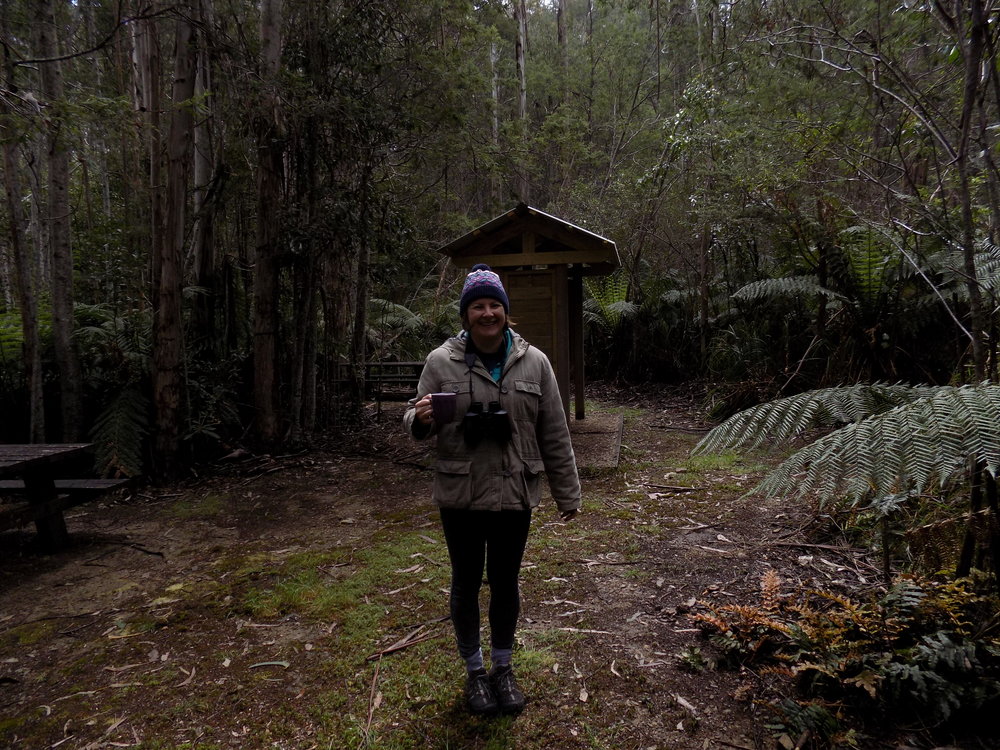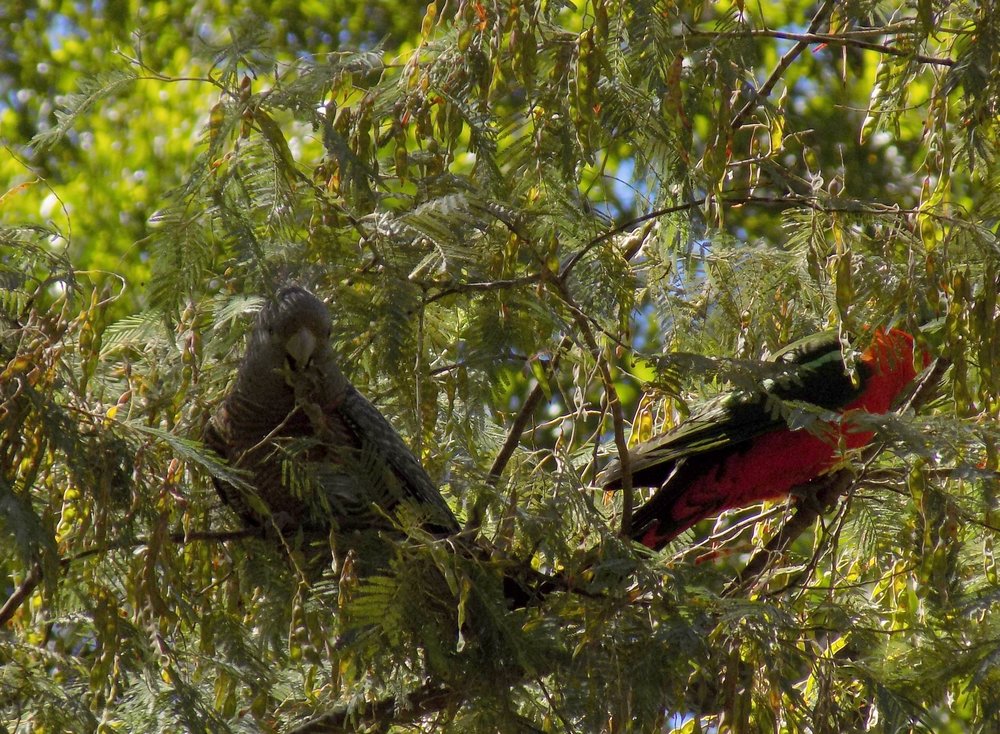In November 2016, I was one of the many UK tourists who visited Australia. My UK friends found it eccentric that I was going to spend three weeks in Australia but not leave one of its smallest states. (‘What? You’re not even going to Sydney?’) But, for this flora and fauna obsessive, Victoria has delights enough. In my day job I’m a botanist, so I have a deep appreciation of plants, and I’m also a keen amateur birdwatcher. I think I’m more of a nature lover than an average tourist, but I was lucky enough to have like-minded friends in Victoria who could take me on a road trip to some incredible wild places, one of which was Goongerah, in East Gippsland.
I would hazard a guess that most visitors from the UK have a mental picture of Australia that includes its beaches, endless deserts, cities (the suburbs of which we recognise from Neighbours) and the Great Barrier Reef. The rainforests don’t seem to feature very prominently in the tourist literature which I think is a sad omission, because they are unbelievably beautiful and full of rare and threatened species.

We went on our trip to Goongerah in the early spring, and seemed to have the whole area almost to ourselves. As someone who lives in crowded southern England, I’m used to queues of traffic even in our “wild places” like national parks, and the noise of passing traffic being almost everywhere, so being somewhere truly quiet, where the dominant sounds were of birds and running water, was very humbling. The campsite is a series of forested glades with a small, clear river running through it. The stereotypical response of the first-time European visitor in Australia is to marvel at how huge everything seems, and even in the campsite I was no exception, as the eucalypt trees seemed to tower over us. I was told by my Australian friend, however, that these are comparatively small compared to true old-growth giants.

I was amazed at the wildlife we spotted from just beside our tent. We startled a pair of Satin Bowerbirds when we arrived. We only got a brief look at the male, but the female became used to us, and we got a close look at her lustrous, olive-green feathers and bright violet eyes as she hopped around our camp. A group of Superb Fairy Wrens fed in short flights in some clumps of sedges, constantly flicking their tails. We saw Gang-Gang Cockatoos feeding on wattles next to King Parrots. In the evening, we were treated to a kookaburra concert in full surround sound as a group of them filled a eucalypt grove. Perhaps that’s a common experience for lots of you, but I was mesmerised. You have no idea how lucky you are to live in a country where you can see parrots every day.
We drove around the area to experience some of the different landscapes and types of forest, and one of the things that particularly struck me was the sheer number of tree ferns. I see the same species, Dicksonia antarctica, grown in the UK in groups of two or three as a stylish and very expensive addition to domestic gardens, so to see a whole hillside covered in them beneath a tall Eucalyptus canopy was incredible. I have a particular love for the Proteaceae family, so seeing the Victorian waratah (Telopea oreades) in flower had me in open-mouthed wonder.
I can see now why appreciating and protecting rainforests is so necessary. If Victorian rainforests aren’t valued as they are now, intact and beautiful and full of life, then they’re even more vulnerable to the wide range of threats that currently exist, such as overexploitation and climate change. I’m jealous that most of you reading this are only a few hours’ drive away. Visit, and bring your friends (visiting from abroad or otherwise), because they’ll go home dreaming of when they can come back.
Banner image courtesy of Laura Jennings.


Leave a Reply